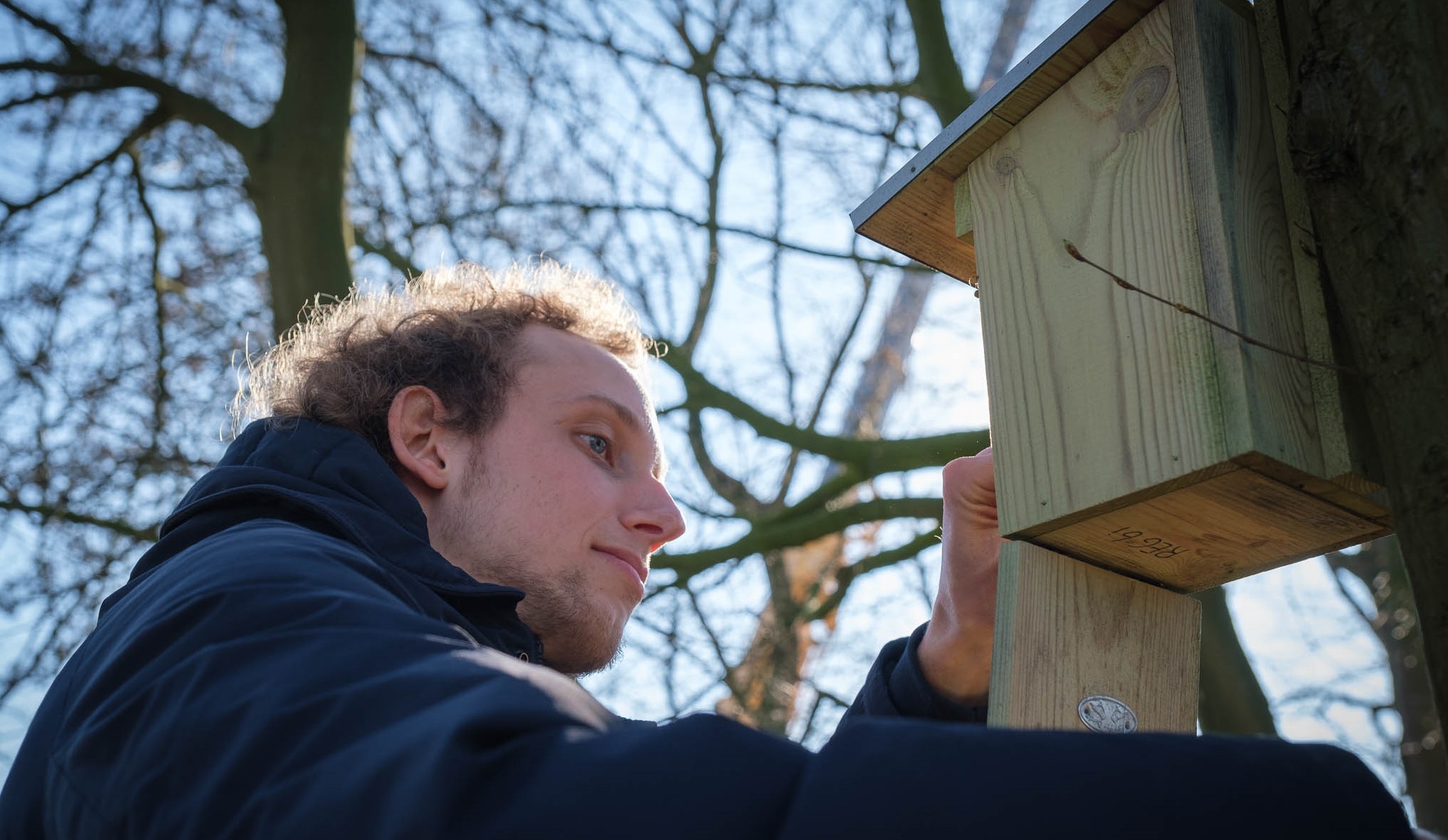The experiment was carried out by Koen Hiemstra during the winter months for his research on the roosting behaviour of birds. Anyone on campus in that period might have seen him on his daily rounds (except at weekends and during holidays), checking the nesting boxes spread around the campus. It took him three and a half hours to check all 99 boxes to see whether they were inhabited.
Birds use nesting boxes for more than just nesting. They are also nice places for an overnight stay. And an overnight stay involves pooping, so the birds leave their visiting cards behind. And that is what Hiemstra, a Master’s student of Forest and Nature Conservation, kept careful track of, armed with a beer crate to stand on, pen and paper and a putty knife to scrape off the poop.
Bicycle lights
The research question behind all this is about light pollution. Do birds find artificial light so disturbing that they avoid such places at night? To literally shed light on this question, Hiemstra lit some of the nesting boxes by hanging little bicycle lights inside them. He assumed the birds would stay away because light disturbs sleep. But that was not the case.
The bolder birds stay, the shyer birds leave
Of the 18 nesting boxes used regularly overnight, nine were fitted with a light. Birds continued to use four of the nine lit boxes. ‘That is not hard evidence, because the numbers are too small for that, but it is striking,’ says Hiemstra. He reckons that whether or not the birds stay depends on their character. ‘The bolder birds stay, the shyer birds leave.’
Mild winter
The fact that there are only signs of use in one in five nesting boxes is explained by the winter, says Hiemstra. ‘It was relatively mild so the birds had less need of somewhere to roost for the night.’ The birds in question are most probably great tits. ‘The nesting boxes were designed for great tits, with openings of 32 millimetres.’ And he twice found a dead bird in the boxes.
The illuminated nesting boxes attracted puzzled glances. And not just glances: six lights were stolen during the experiment. Hiemstra’s research was supervised by Anouschka Hof and Kevin Matson, who teach in the Wildlife Ecology and Conservation chair group. Before his Master’s in Wageningen, Hiemstra did Applied Biology at the HAS University of Applied Sciences in Den Bosch.

 Koen Hiemstra is checking one of the nesting boxes on campus. Photo Guy Ackermans
Koen Hiemstra is checking one of the nesting boxes on campus. Photo Guy Ackermans